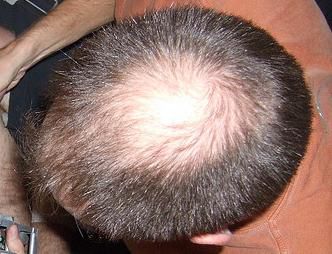-
 True anomaly
True anomaly
-
 Borage
Borage
-
 Zooplankton
Zooplankton
-
 Systolic pressure
Systolic pressure
-
 Hyaline
Hyaline
-
 Duodenum
Duodenum
-
 Soft acid
Soft acid
-
 Soma
Soma
-
 Point-to-point link
Point-to-point link
-
 Mangrove
Mangrove
-
 Gaviiformes
Gaviiformes
-
 Kademlia
Kademlia
-
 Draconitic period
Draconitic period
-
 Fibrinogen
Fibrinogen
-
 Monoclonal
Monoclonal
-
 Aerodynamic vehicle
Aerodynamic vehicle
-
 Core sampling
Core sampling
-
 Alfvén waves
Alfvén waves
-
 SAFER
SAFER
-
 Vickers hardness index
Vickers hardness index
-
 Cryosurgery
Cryosurgery
-
 Homeplug
Homeplug
-
 RFID
RFID
-
 Triptan
Triptan
-
 Spreadsheet
Spreadsheet
-
 LOX
LOX
-
 SQUID
SQUID
-
 Radiative forcing
Radiative forcing
-
 Polynomial
Polynomial
-
 Cellular automaton
Cellular automaton
Alopecia
Alopecia is lack of hair following accelerated abnormal hair loss (alopecia).
Symptoms of alopecia
Normal hair loss is 50 to 100 hairs per day. Alopecia develops when a person loses more than 100 hairs per day over a long period of time. As a person has approximately 100,000 hairs, the number of hairs on the scalp declines gradually. Some areas of the scalp are more affected than others (crown of the scalp, temporal areas) although alopecia can also lead to uniform hair loss.
Causes of alopecia
There are several forms and therefore several causes of alopecia.
- The most common form is androgenic alopecia. This is hereditary and mostly affects men (70%, sometimes even young people).
- Acute alopecia is due to physiological stress (chemotherapy, nutritional deficiencies, iron deficiency, hormone problems, acute irradiation, etc.).
- Localised alopecia is caused by local skin problems (scarring, tumour, burn, parasites).
- Congenital alopecia is an absence of hair from birth.
- Localised auto-immune alopecia (alopecia areata) occurs over the whole scalp (alopecia totalis) or over the whole body (alopecia universalis).
Treatment of alopecia
Hormonal treatments can slow hairloss although there is not yet an effective treatment to make hair regrow. However, hair implants are possible although the technique is expensive.
 Alopecia means all forms of hair loss and can affect either sex. © Mike Burn, Flickr, CC by-sa 2.0
Alopecia means all forms of hair loss and can affect either sex. © Mike Burn, Flickr, CC by-sa 2.0
Latest
Fill out my online form.



